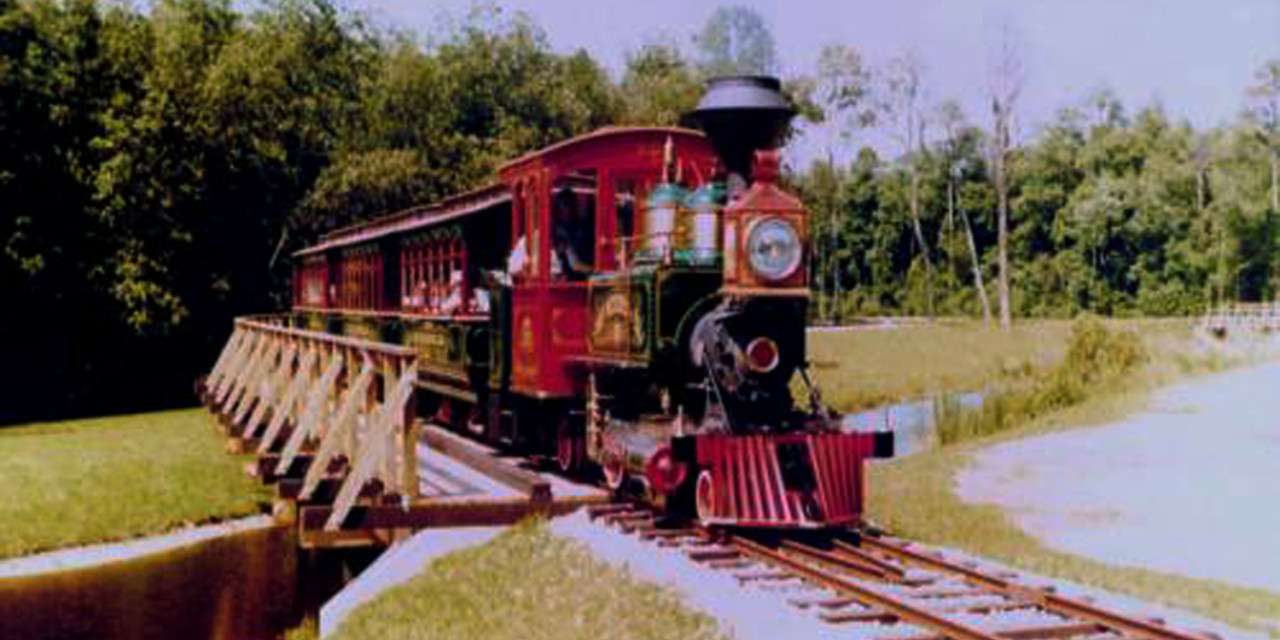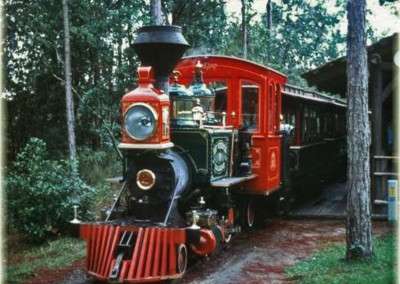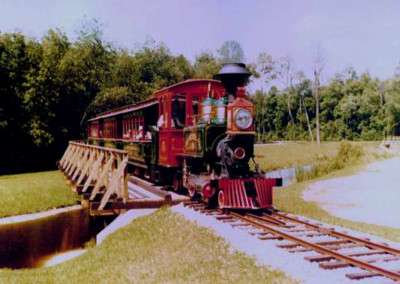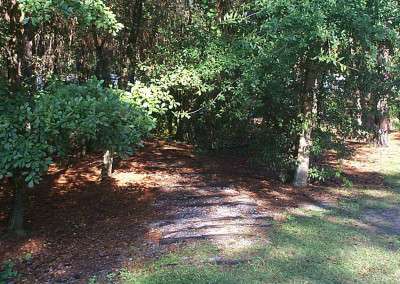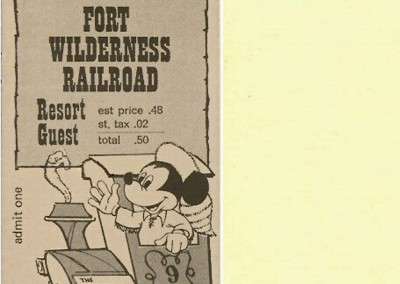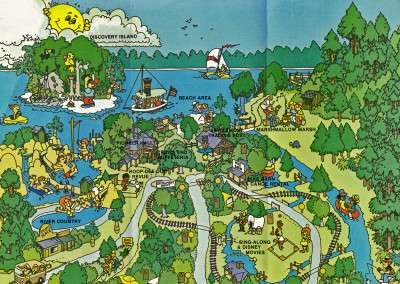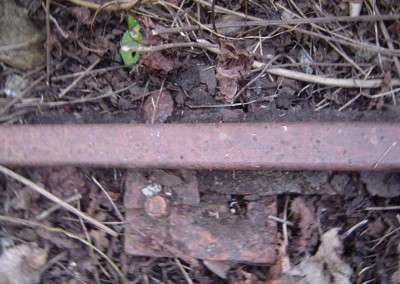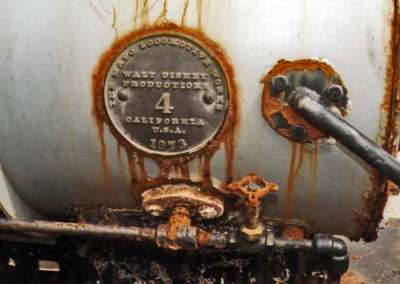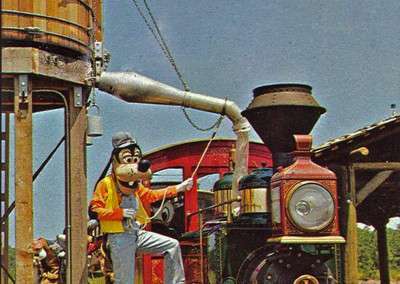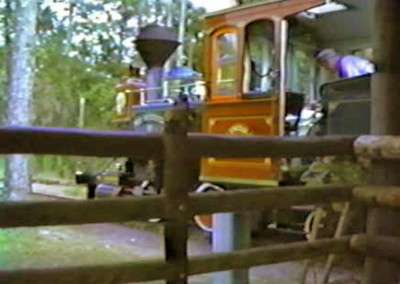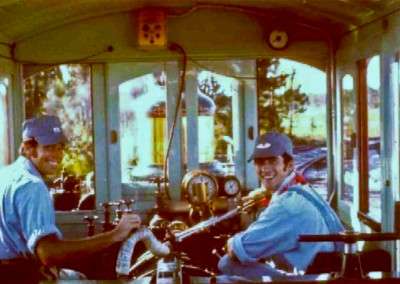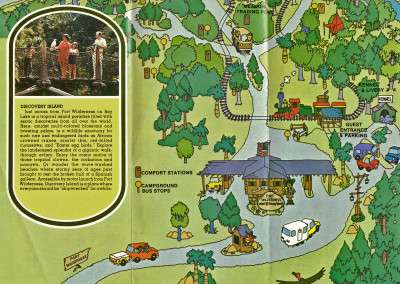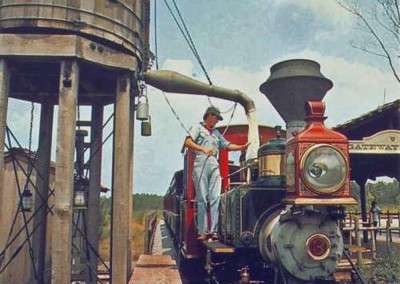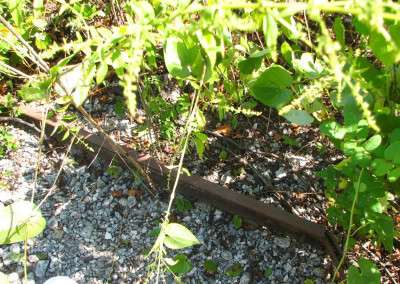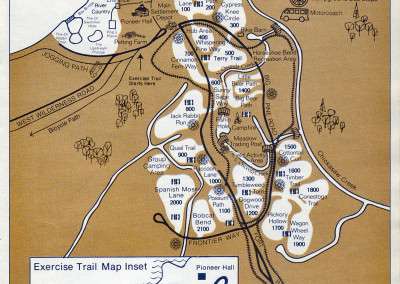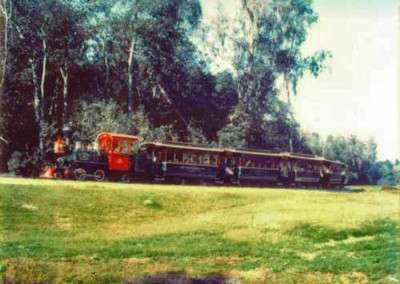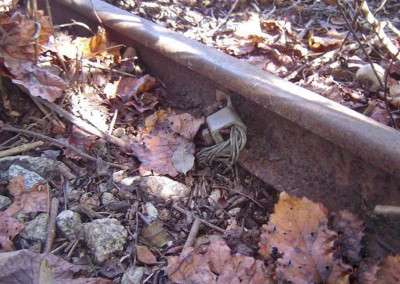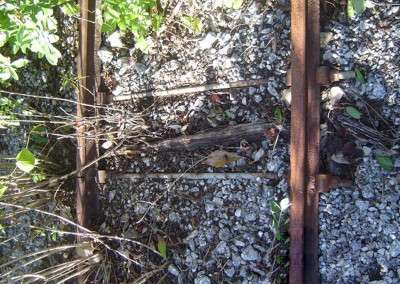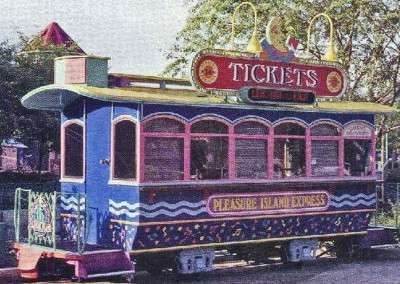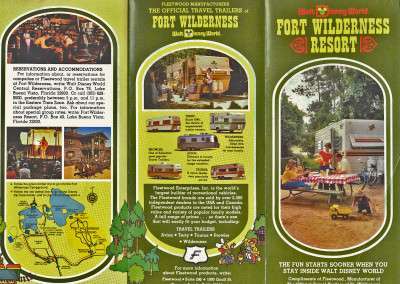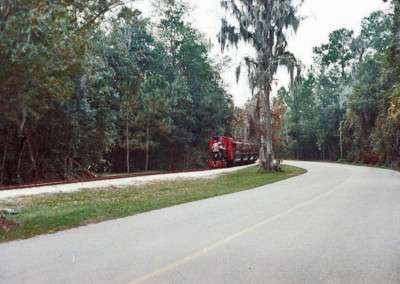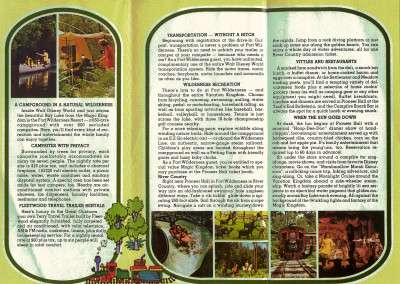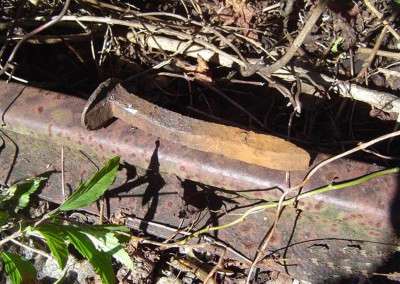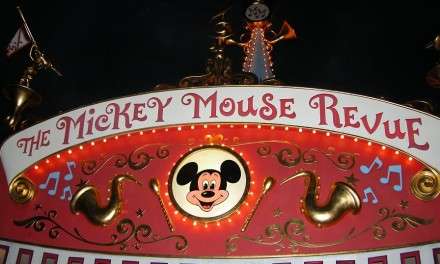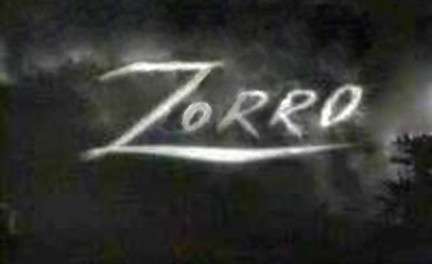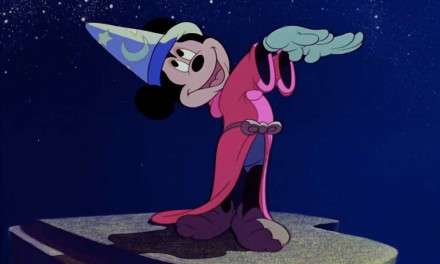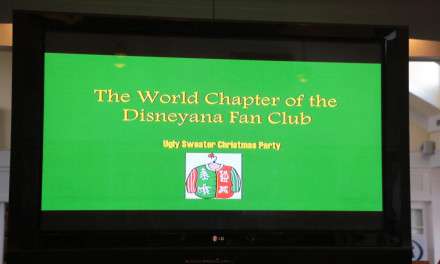Walt Disney was a lifelong Rail Road fanatic. Ever since his earliest days in Marceline Missouri, when he and his brother Roy would go to the train tracks near their small farm and wait for the trains to come by, sometimes waiting for their uncle Mike who was an engineer to pass, he had seen the railroad as a path to excitement and adventure, and he wanted to bring that feeling into his new theme park, Disneyland. He even had a small working steam train named the Carolwood Pacific, in his own backyard.
Walt would have loved the small railroad that was placed in the Fort Wilderness Resort and Campground. It had its official opening along with a dedication ceremony on January 1, 1974. In that ceremony, a golden spike with the assistance of Mickey and Goofy and the Walt Disney World Ambassador was driven into the rails, marking the start of its service. The train was in addition to the trams and busses used to get around the large resort and campground. But as charming and nostalgic as this railway was, it was fraught with problems from the beginning, mainly due to shoddy and unfamiliar construction techniques used for laying the rail bed. In addition, despite being almost twice the length of the Magic Kingdom railway, the engines carried much less fuel and water, necessitating more frequent stops for “replenishment” and even sometimes running out of fuel in the middle of a run. In comparison, the Magic Kingdom engines carried 1,837 gallons of water and 664 gallons of fuel, the Wilderness Railroad only held 225 gallons of water and 175 gallons of fuel.
The four locomotives were constructed by WED and MAPO in 1972 at Glendale California, for more than a million dollars. At the same time, the Buena Vista Construction company was placing the track at the resort. The problem was the company never laid track before. Railway beds are more complicated than meets the eye, and must be laid precisely, and the composition of the bed underneath dictates how the ballast, gauge rods, tie plates and placement of these parts should be made. Unfortunately, wrong sized rails, no rail benders and wrong placement of the ballast were to cause headaches and eventually doomed the railroad.
The engines and cars were a narrower gauge than the Magic Kingdom railroad. Known as plantation locomotives by Baldwin, and used in Hawaii and other tropical island plantations because of their small gauge, they were lighter and could traverse curves better and were much cheaper to run. They were also extremely reliable. There were a total of four engines, each pulling five cars at a maximum speed of 10 mph. Each train could carry 90 guests and were approximately 115 feet long. Like the locomotives in the Magic Kingdom, they used diesel fuel to light the fires. The engines arrived at Walt Disney World in the spring of 1973, and by November of that year, started on a “Soft Opening” schedule with regular running times. The trains, like their Magic Kingdom counterparts were decorated in gold, green and red. The Imagineer behind the color format was Bob McDonnell who also designed the logo and poster used to advertise the train. The train was originally free to guests staying at Fort Wilderness; guests at other WDW resorts were charged $.50, and eventually $1.00.
However, the rail was doomed, almost from the beginning. In addition to the headaches with the track, which sometimes caused derailments, the ongoing maintenance was extremely costly and caused much downtime. Also, in Disney’s yearning to save money, they hired cast members with no knowledge of running steam engines or trains. They received some “elementary” knowledge of steam trains mechanics, but steam engines, although an old technology, can still be extremely dangerous if temperatures and pressures are not kept within limits, but these cast members lacking the intimate knowledge of steam trains were not up to the task. In addition, the trains began running at 7am, and many guests did not want a train roaring by their campsite that early. And since the tracks had no barricades separating the campsites, concerns were a child could be hit by the train.
So with all the headaches and safety issues, Disney decided to retire the railroad. But many railroad enthusiasts, including Dick Nunis in charge of WDW operations tried to save the railway. The train was placed on a six week furlough to see what could be done. The train crews were assigned to other jobs at the resort. This they were told would be temporary. The engine # one was moved to the Central Shops backstage for restoration, the others were in the roundhouse, which was located in the service area behind the Outpost Depot, waiting for their turn. But the cost to restore the railroad was enormous and Nunis tried to find a sponsor to offset the costs, but failed. He then looked into replacing the track and constructing a new one, but the cost was more than 3 million dollars. Unfortunately Disney was in the middle of building EPCOT, and its costs were rocketing out of control; the Fort Wilderness railroad was not a priority and all restoration stopped. All the cars and engines were moved out of the roundhouse in 1982, than later moved to a warehouse area outside. The weather caused the trains to gradually deteriorate. However, in 1992, Disney announced the building of a Buffalo Junction, a small area between the Wilderness Lodge and the Fort Wilderness Resort. Buffalo Junction would be a themed resort aping Dodge City of the old west. There was talk about it being a possible Disney Vacation Club resort. This would be a perfect time to revive the Fort Wilderness Railroad to connect to the three resorts. But the idea never came to fruition. So what happened to all the equipment?
In 1995, in an effort to save the equipment from perishing in the Florida weather, Ward Kimball, Disney Legend and railroad enthusiast along with the Carolwood Pacific Historical Society began talks with Disney to purchase the trains for private collectors. After more than 5 years of talks, Disney agreed, along with the combined efforts of Michael Broggie, Marty Sklar and Jane Alcorn. Before the purchases of the equipment, Disney removed the graphics and logos from the trains. While doing so, they actually discovered Ward Kimball’s signature in one of the cabs.
The Brevard Zoo in Melbourne Florida received four of the coach cars and about three thousand feet of track in a donation in 1986. Two Cars were donated to a Florida preschool. If you ever purchased tickets at a Pleasure Island event, two of the cars served as ticket booths. They were replaced by permanent structures. One of the cars ended up in the Typhoon Lagoon parking lot (It is still there today) and the other was auctioned off at some point. All the engines were purchased by Carolwood Pacific members. Bill Dundas, Michael Campbell and Jim Zordich were the lucky owners. Jim Zordich sold his equipment to John Lasseter for his own personal railroad. A customary condition in a contract to purchasing any Disney vehicle, the owners are specifically forbidden to rebuild or repair them to operational condition. However, three engines have been restored and a passenger car and engine are on display, all in California.
Today, only small, visual remainders of the Railroad exist. Sharp eyed guests can still make out where the old roadbed was, and the entire track removed. The train last carried guests over 35 years ago, when in February of 1980 it was placed on hiatus, never to return. But in those little more than six years of operation, this attraction/transportation vehicle was beloved by the countless guests and railroad buffs fortunate enough to ride it. It is just another example of just how Walt Disney World is in a constant state of flux, and you will never know when your favorite attraction or show will go by the wayside. The amazing pictures of this long forgotten Railway are credited to David Rose’ Fort Wilderness Railroad Site…

